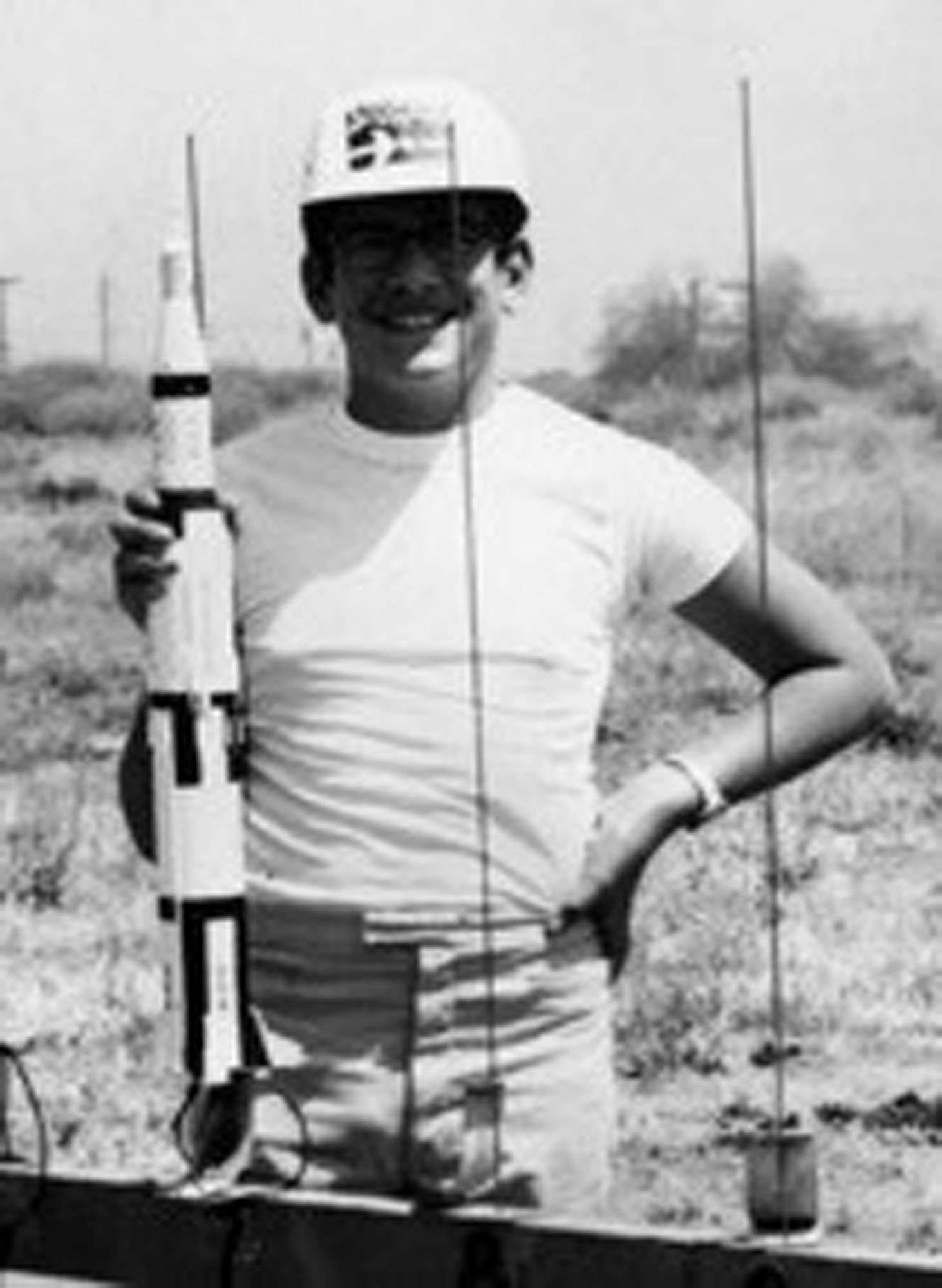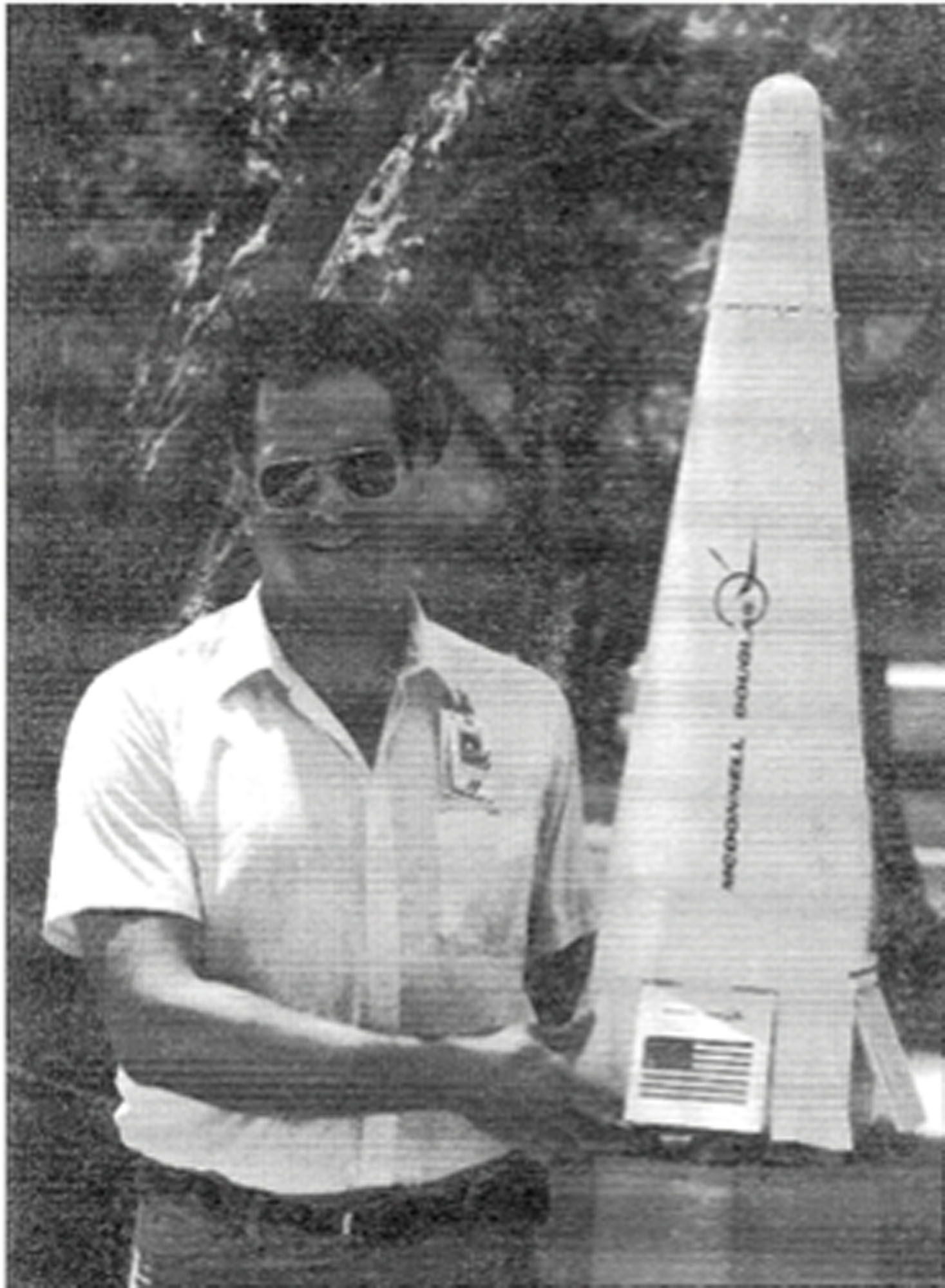Teaching the Beauty of Flight
By Professor Don Edberg
In 1962, when I was six, I remember watching John Glenn’s Mercury orbital flight—the liftoff, the three full orbits around Earth and the splashing down in the North Atlantic Ocean. And of course, I remember the Sunday evening on July 20, 1969, five days into the mission of Apollo 11. My family surrounded the television when Neil Armstrong said, “Tranquility base here. The Eagle has landed.” I knew then that something special had happened—the memory is seared into my mind.
 There is something about flying machines–airplanes, rockets and spacecraft–that simply hypnotize me. I always look up whenever something flies over to watch it magically glide overhead. Growing up, it was just the beauty of flight that caught my full attention, but as I became more educated, I appreciated the engineering necessary to make these machines work. To me, there is simply magic when a plane flies or a rocket roars off a launch pad. Understanding that magic has captured me all my life.
There is something about flying machines–airplanes, rockets and spacecraft–that simply hypnotize me. I always look up whenever something flies over to watch it magically glide overhead. Growing up, it was just the beauty of flight that caught my full attention, but as I became more educated, I appreciated the engineering necessary to make these machines work. To me, there is simply magic when a plane flies or a rocket roars off a launch pad. Understanding that magic has captured me all my life.
My First Life
In school, I was a classic nerd where I mostly kept to myself. I taught myself mathematics and aerodynamics from reading my father’s textbooks, and airplane and rocket magazines. By age 14, I soloed in a Schweizer 2-33 sailplane over El Mirage, later earning a private pilot license. None of this helped my social life, but it paid off as I was high school valedictorian and won several college scholarships, including one from the Academy of Model Aeronautics.
Ultimately, I chose to do my undergraduate engineering studies in applied mechanics at UC San Diego. At the time, the university didn't offer an aerospace engineering major, but I could fly radio-controlled (RC) sailplanes at nearby Torrey Pines after class every day. I flew competition RC, which culminated in being a pilot in the 1981 and 1983 world RC sailplane championships, which is like the Olympics of model airplanes. I designed and built my own models out of fiberglass composites and wood, and flew them. My life revolved around flight.
 I went to graduate school at Stanford University and earned my doctorate. After that, I worked in the aerospace industry for more than 20 years. During this time, I started to have concerns about the U.S. aerospace workforce. Many experienced engineers with decades of experience were retiring, taking with them their invaluable knowledge. Little was being done to pass down their knowledge to a new generation. It seemed silly for new engineers to reinvent the wheel, repeating mistakes their predecessors made in the past. Many of these mistakes were very costly in terms of finances, schedules, and even safety. It made no sense to me to allow them to reoccur.
I went to graduate school at Stanford University and earned my doctorate. After that, I worked in the aerospace industry for more than 20 years. During this time, I started to have concerns about the U.S. aerospace workforce. Many experienced engineers with decades of experience were retiring, taking with them their invaluable knowledge. Little was being done to pass down their knowledge to a new generation. It seemed silly for new engineers to reinvent the wheel, repeating mistakes their predecessors made in the past. Many of these mistakes were very costly in terms of finances, schedules, and even safety. It made no sense to me to allow them to reoccur.
My Second (and Current) Life
I felt like I had something to offer to address these concerns: teach what I know in way that would instill understanding and enhance retention of what I taught. This meant incorporating hands-on activities and my personal “war stories” from my industry and hobby experience, too.
I joined Cal Poly Pomona’s aerospace engineering department in 2001 to teach with these principles and I haven’t looked back! To me, hands-on experience for any aspiring engineer is essential. So I helped transform the aerospace curriculum—freshmen now flight-test RC airplanes, model rockets, and a turbojet engine in their introductory classes. Plus, a hands-on avionics class has junior students learning how to operate on-board actuators, sensors and flight control systems—all needed on
flight vehicles. The sooner students get their hands on something real, the sooner they can realize their passion for flight.
When I teach my courses, I instill in each student the principles of being a good engineer. Good engineers know how to solve both analytical and hardware problems, how to recognize flaws and inadequacies and how to correct them. They understand how systems interact with each other to operate without interference. They know there are many ways to solve a problem, but it’s their job to determine what’s best, which may have many different meanings: the least mass, least cost, smallest, fastest to build and deploy, most survivable, and so on.
In short, a good engineer needs to know more than just the engineering itself. I teach with these principles because I know that if I was still working in industry, these are the same traits I’d be looking for in any hire. To do this, you must go beyond imparting instruction from a textbook if you want to convey a way of thinking like an engineer. No textbook will ask students to determine the wind speed necessary to topple the Washington Monument, but my class does. These sort of problems, and their process to find an answer, stay ingrained in a student’s memory, helping cultivate the principles I try to impart. Through these principles, the magic I see in flight reveals itself to my students.
Southern California is rich with opportunities in aircraft and space vehicle companies. I know that many graduates from my classes are filling these companies, cast under the spell and beauty of flight like I am. As I begin my 23rd year of instruction, my passions are the same—the machines that take flight into the skies and space, and the next generation of engineers that will make it happen.
About the Professor. Edberg has taught in Cal Poly Pomona’s aerospace engineering department for 22 years. In his career, he initiated new courses that enabled the department to add an astronautics emphasis for students more inclined for space flight. Edberg also started up the department’s unmanned aerial vehicles lab and astronautics lab—both are filled with students and projects. His design classes have been adopted as professional short courses by the American Institute of Aeronautics and Astronautics (AIAA). His textbook “Design of Rockets and Space Launch Vehicles” earned the 2022 AIAA Summerfield Book Award for being recognized as the best book recently published by AIAA. In the CSU system, he earned the 2022 Wang Family Excellence in Teaching Award and the 2019 Provost’s Excellence in Teaching Award at Cal Poly Pomona.